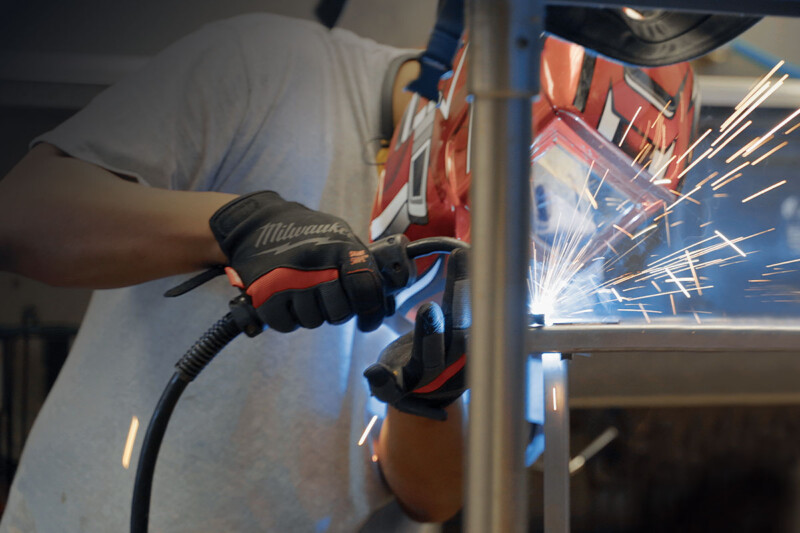Best Practices For Fryer Maintenance

Oil is expensive, one of the biggest costs after labor for some operations. If you don’t properly care for your fryer, it’s like throwing all that money down the drain. Poorly maintain a fryer and you’ll waste time and money changing oil more frequently and food quality will suffer. Eventually, your fryer won’t perform and you’ll be shelling out for a service call.
According to makers and service agents, operators can pretty easily handle the cleaning on electric fryers but gas models have more parts that require more attention by skilled technicians. Regardless of which kind of fryer you use in your operation, some notes of caution apply to all.
First and foremost, remember that hot oil and water don’t mix. After cleaning, make sure parts are as dry as possible before adding oil back in. Hot oil splatters, where it lands is unpredictable and if it hits skin, you’re risking a severe burn. Kitchen crew should wear chemical splash goggles, burn guard aprons and hot-oil-resistant gloves when handling hot oil and when they’re thoroughly cleaning fryers. Take a minute to show employees where the high-limit and temperature probes are located in the vats. Explain that they need to take it easy around these sensors, which are delicate and absolutely critical to safe operation of the fryers.
Daily Diligence
During everyday operation, employees should skim the top of the oil frequently, particularly if your menu includes breaded products that leave a lot of debris behind. Chunks of breading carbonize and cause the oil to break down more quickly, and those chunks can clog components. Without skimming that debris out, you’ll cause the fryer’s filter pump motor to work overtime.
In addition to skimming, employees need to filter the oil either manually or through an automated filter system depending on the model of fryer. Change the filter paper/envelope at least once a day and twice a day in operations running for 24 hours or doing very heavy frying. Even if the filtration is automatic, users have to clean out that filter pan and crumb catcher once a day with a cloth soaked in a solution of hot water and a multi-purpose detergent. Makers say to avoid using corrosive cleaners and harsh pads on the pan; these can scratch the stainless, which will make subsequent cleanings more difficult.
“The most common issues we see are related to the filter systems incorporated with the fryers,” says Rob Dunwody, Mid-Atlantic Region Service Manager at Clark Service Group, based in Lancaster, Pa. “Following the proper procedures for assembling the system components, maintaining the filter pan, using the proper filter media, and making sure that there’s no water in the filter system reduces 90% of issues.” Don’t be tempted to buy knock-off filters either, they’re often not sized correctly and don’t filter out much of anything. Use OEM brands designed for the make of the fryer.
Each time you change the filter envelope, make sure to lubricate the filter pan O-rings. “Not lubricating or changing filter pan O-rings as often as instructed introduces air into the system,” says one maker. “This slows down filtration, causing excess oxidation—that’s bad for oil.”
Wipe down fryer exteriors every day with a damp cloth, warm water and mild detergent. Again, don’t use corrosive cleaners or scouring pads which can damage the stainless. “I always recommend simply doing your best to keep the outside of the equipment free from oil,” says Dunwody. “It amazes me how easily that oil buildup migrates into the control areas on fryers.” Tell employees to keep that buildup at bay.
Oil Change
During normal use of your fryer, a deposit of carbonized oil is gradually going to form on the inside of the fry pot. A great time to clean the vat is when you’re about to put in new oil. Periodically remove this film by following a boil-out procedure you’ll find in the maker’s instructions (manual or online). First turn the thermostat off and allow the oil to cool down to about 100°F, which is cool enough to drain into another container but not so cold that the oil coagulates. With an oil caddy in place below the drain, open the valve slowly to prevent splash-back and close the valve when it’s all drained out.
Then, use a long-handled coil brush made for high temperatures to clean remaining debris from the drain line in between flues in gas fryers or around heating elements in electric ones. Add water and fryer cleaner to the fill line, replace baskets and boil the solution at 350°F for 15 to 20 min. Finally, turn the thermostat off, allow the cleaning solution to drain slowly and use a long-handled brush to clean the sides, top and heating elements again; any gummy or fried-on accumulation should be loosened up at this point. Open the valve and rinse the vat with clean water to remove all remaining residue. Remember, before adding the new oil, make sure all parts that come in contact with the new shortening are as dry as possible.
Periodic Maintenance Tips
Beyond daily filtering and a regular boil-out, there are a few other steps to perform on a monthly or quarterly basis. In may sound obvious, but Dunwody points out that it’s a good idea to pull the fryer out from the wall and clean around it. “The oil from the fryer can deteriorate the composite and natural materials used in some casters,” he explains. Fryers must be level.
Additionally, periodically check O-ring integrity in the drain pan connection. Hire a qualified technician to do proactive maintenance particularly on gas fryers semiannually to make sure all the combustion components are clean and fully operational, and get the blower and vents cleaned.
Lastly, newer fryers take some of the guesswork out of maintenance by offering user-friendly touchscreen controllers that notify you when they need cleaning or maintenance. Otherwise, users should pay attention if the oil foams excessively or generates smoke. Also monitor the quality of the product (greasy) and listen for any usual sounds that may signal the need for a service visit. Finally, keep an eye out to make sure your employees are hooking baskets on the proper basket holders, not on the edge of the flue—oil down the flue can start a fire.
RELATED CONTENT
- Advertisement -
- Advertisement -
- Advertisement -
TRENDING NOW
- Advertisement -
- Advertisement -
- Advertisement -


